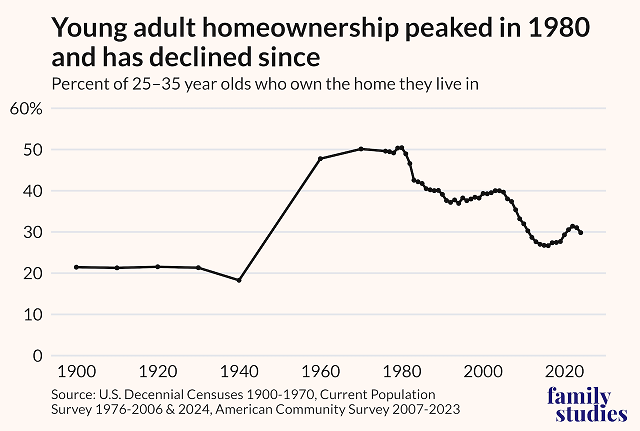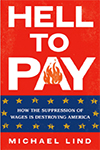
There is considerable concern about housing affordability in the United States. Housing is the most expensive element of the cost of living, which makes it an important issue to both households and governments. Indeed, the high cost of housing relative to income (i.e. the degree of affordability) is an existential threat to the future of the middle-class in some housing markets (metropolitan areas), and even threatens to jeopardize the demographic future of the republic. While the housing situation has not become a crisis everywhere—and for older Americans remains relatively affordable—for young Americans, housing has become crushingly expensive in most of the country, crippling their economic and family futures.
Highlights
- Americans across all demographic groups and political persuasions prefer single-family housing to apartments.
- For young Americans, housing has become crushingly expensive in most of the country, crippling their economic and family futures.
- The American dream of owning good housing at a good price is increasingly unobtainable, especially for Americans under age 35.
Whereas in 1969, the price of a median home cost about five years of a young adult’s income, today it costs nearly nine years. As we show in a new Institute for Family Studies report, Homes For Young Families: A Pro-Family Housing Agenda, since 1970, the share of young adults who own the home they live in has declined from 50% to around 25-30 percent. Moreover, across metro areas, the share of housing markets we define as “Seriously Unaffordable” or worse (i.e. median homes worth 10 years or more of a young adult’s income) rose from 1% to 37 percent. By far, these increases were the most severe in large coastal markets, which is why Americans are increasingly migrating away from these markets in pursuit of affordability.

Many factors have conspired to worsen housing affordability for young adults, but two sets of policies in particular have dramatically boosted housing costs without producing economic benefits to offset cost: 1) local land-use rules limiting housing supply, and 2) urban growth boundaries preventing greenfield development. We find that the most unaffordable housing is overwhelmingly likely to have both urban growth boundaries and very strict local land-use rules. As a result, it is no exaggeration to say that the housing affordability crisis facing American young adults has substantially been caused by bad urban and regional planning, and bad local land-use policies.
Since the housing affordability crisis facing young adults is largely policy-induced, we propose a wide range of policy fixes for every level of government, including: extremely local HOAs; municipal zoning related to parking, ADUs, renovations, policing priorities, and lot size; state rules governing municipalities and educational programs; and federal housing programs and housing assistance. Our proposals are focused on ensuring that obstacles to new housing supply are removed, and especially on encouraging policymakers to focus on the regulations that substantively burden the transition into family life.
Read the rest of this piece at: Institute for Family Studies.
Wendell Cox is principal of Demographia, an international public policy firm located in the St. Louis metropolitan area. He is a Senior Fellow with Unleash Prosperity in Washington and the Frontier Centre for Public Policy in Winnipeg and a member of the Advisory Board of the Center for Demographics and Policy at Chapman University in Orange, California. He has served as a visiting professor at the Conservatoire National des Arts et Metiers in Paris. His principal interests are economics, poverty alleviation, demographics, urban policy and transport. He is author of the annual Demographia International Housing Affordability Survey and author of Demographia World Urban Areas.
Lyman Stone is the Director of the Pronatalism Initiative at the Institute for Family Studies. He is also the Director of Research for the population consulting firm Demographic Intelligence, a Senior Fellow at the Canadian think rank Cardus, and a PhD Candidate at McGill University. His work on demography and fertility has been covered widely in most papers of record in North America, as well as many in Europe and Asia.
Photo and chart courtesy of Institute for Family Studies.













Don't assume that you cant get affordable Single Family
Wendell:
Great to see you are still on target. We are designing single family developments in south Texas with home pricing in the lower $200K to lower $300K (about the price of an accessory garage with a small ADU, here in Minnesota).
These are not cheap homes - brick & stucco with tall ceilings, most with two car garages and spacious. Not on small lots but beautiful neighborhoods with connective trails, amenities, and winding streets with elegant setbacks.
This is one example in Brownsville: https://youtu.be/EgyvSEJOgKo
These are not plain 'boxes' in a cookie cutter pattern, but varied architecture and attention to detail better than many upscale neighborhoods.
For those that want maintenance free living but don't want to be attached to the neighbor, look at the detail, architecture, and pricing of this McAllen neighborhood: https://youtu.be/0XzxDAbbDCk
Yes, south Texas has more affordable labor and lower land costs, but still, look what you can get.
What of areas like Minnesota where labor costs are high as well as materials, and build code that is severe to hold snow loads on rooftops, extreme weather, etc. - and absurdly high raw land pricing?
We looked at a subsidized 800 sq.ft. 2 bedroom apartment unit where kids would have a common hallway to play, and cars would be parked outside rotting in the weather. The car to a low income family is proportionally a huge investment.
We reconfigured that 800 sq.ft. living area into a single family detached home, along a common private lane (wider than an alley). Added a one car garage, and set these homes staggered for a panoramic view. To redistribute space for where people live instead of cars park, we place the parking between homes which also cleans up the cluttered car appearance of a typical rear accessed home. Instead of a street on the other side of the home (porch side, not Porsche side) we have common open space with walks and trails. The staggering of the homes provides a panoramic view of the generous common open space. The significant reduction of pave areas reduces run-off. The results is a neighborhood that is single family living, with Minnesota high costs, that can still be in that $300K to $400K price range. Density? This example is 12.5 single family homes per acre still maintaining a suburban sense of space: https://youtu.be/KjlwRRZSnec
All of these neighborhoods take an unconventional attack reducing (or eliminating) the monotony of new growth. Today, we have literally on the recent approvals and in the design process tens of thousands of these new homes in process (almost 100 new neighborhoods approved or in he approval process).
Affordable neighborhoods do not have to be an overly compressed future slum. That is the problem with having affordability by sacrificing design, living standards, space, function, and beauty. Affordable neighborhoods must instill a sense of pride and self worth. Many don't.
None of these would be possible without the many developers and builders believing that conventional methods are no longer valid, and these trailblazers are the future of attainable housing.